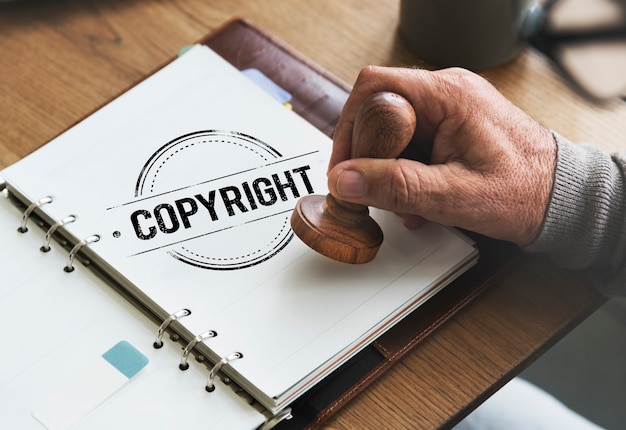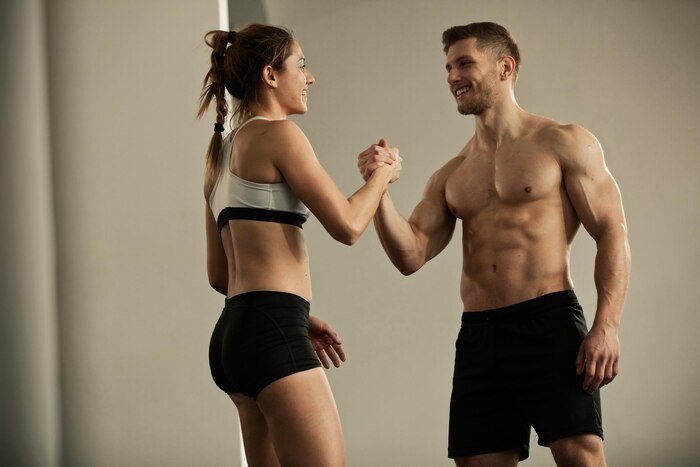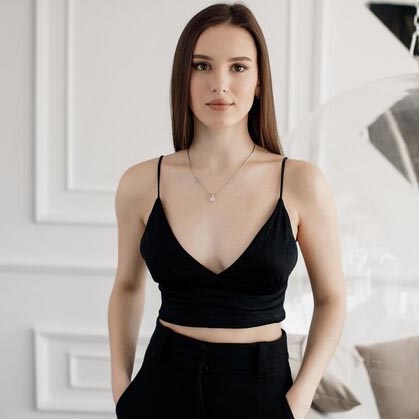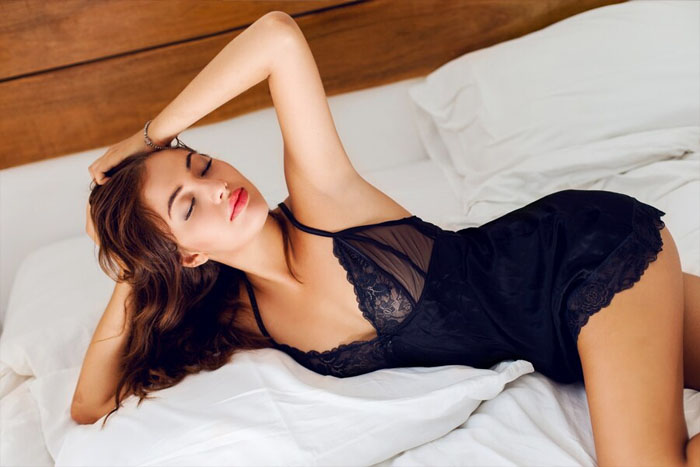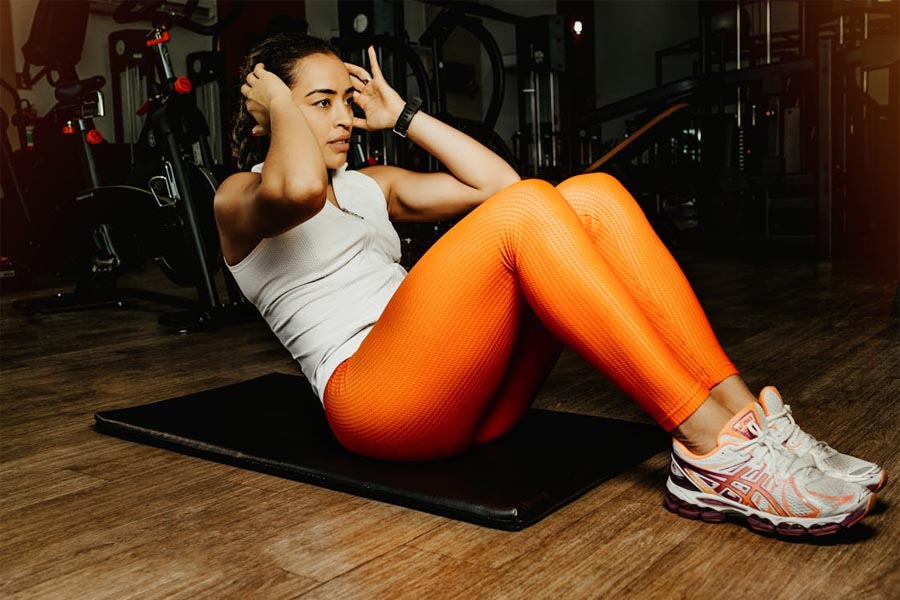Everything changed with the advent of e-commerce, so there is no longer a costly answer to the question of how to start a clothing line. Without opening a physical location, turn an unremarkable, tiny internet store into a respectable company with a household name.
With a focus on affordability, this guide will assist you in creating a business plan for a clothing brand in 2025. We’ll assist you in establishing and growing a successful home-based fashion brand that will redefine retail and smash current barriers. From nailing down your brand identity to figuring out manufacturing and sales, we have practical tips to turn your apparel dreams into a profitable reality.
Create a Clothing Line Business Plan in 10 Easy Steps
Now that you understand the basics of writing a clothes store business plan for a fashion firm, you can begin methodically structuring your ideas. Fortunately, there is not much to this process. Write a plan that summarises your vision for the business by following these ten easy steps.
Review Business Plan Templates and Examples For Inspiration

Before you dive into crafting your business plan for a clothing store, check out templates and examples from others in the fashion industry.
See what sections and levels of detail are typical. You’ll want sections on your business overview, products, target market, marketing plan, operational details, and financial projections. Get ideas for how to effectively describe your vision and how to find a clothing manufacturer.
Study the formatting and flow. Notice how the best plans have clear headers, bulleted lists, and charts to make information easy to navigate. See how much space is devoted to each element; you’ll want to spend more time on your product descriptions and marketing strategies than boring legal details.
Borrow phrasing and statistics. If a sample business plan for a clothing store refers to trends like the growing plus-size clothing market or the increasing popularity of sustainable fabrics, use that in your write-up. And feel free to draw on industry growth statistics and sales numbers from other sources to build a case for your business.
With the right templates and examples, crafting an eye-catching clothing line business plan can be a breeze. Study up and steal the best bits and pieces for your creation. Soon, you’ll have a polished plan to pitch to potential investors and partners to turn your fashion dreams into a reality.
Write An Executive Summary
This is your opportunity to grab readers’ attention and enthuse them about your clothing line with the executive summary. Provide a summary of your vision, your target audience, and your revenue model in a few paragraphs.
Keep it short—around 125 words. Focus on the highlights and be persuasive; this summary should make readers eager to learn more. Explain your brand and designs in a sentence or two. Who will buy your clothes? Where will you sell them? What makes your business unique?
End your summary with a simple mission statement. For example, “Our mission is to bring affordable, fashion-forward designs to young professionals.” This frames your whole plan and gives readers a quick sense of your purpose and passion.
With a compelling executive summary, you’ll capture attention and set the right expectations for your business plan for a clothing store. Keep it friendly yet professional, and convey your enthusiasm for this new venture! Readers will appreciate your passion and vision.
Include Company Information
You ought to give some history about your business and corporation. Talk about specifics like your target market, your mission and vision, and the date and reason you founded the business. Talk about the major turning points and successes you have had thus far.
Include the address of your company along with any licences or permits you may have acquired. Enumerate your team’s main players along with their pertinent experience. Talk about how their knowledge and experience will benefit your clothing line.
Provide information on your product range and designs. Explain what makes your clothing unique and in demand. Discuss how you identify trends and use them to develop new seasonal collections. Describe how your products align with current fashion styles and the needs of your target customers.
Giving prospective investors access to this kind of information about your brand, staff, range of apparel, and business plan enhances your credibility and helps them assess the feasibility and potential of your venture. Your business plan for clothing stores will be stronger if you can give more specifics.
Describe Your Products And Services
Your Product Line
Discuss the specific products in your clothing line. Will you concentrate on dresses, shoes, t-shirts, or the entire clothing line? Describe each product’s designs, dimensions, structures, supplies, and cost ranges. Keep your line cohesive by using the same styles, fabrics, and branding across products.
Your Target Customers
Give a thorough description of your ideal client, including their age, region, way of life, and preferred styles. Talk about how your product line will satisfy their wants and appeal to their preferences. It will be easier to develop, market, and sell your items if you have a thorough understanding of your target market.
Product Sourcing And Manufacturing

Explain how and where you will source materials and manufacture your products. Will you use an international manufacturing business, employ local seamstresses, or stitch the clothing yourself? Talk about any agreements or contracts you may have. The secret to your success is finding a dependable source for reasonably priced, high-quality output.
Pricing And Sales Strategy
Talk about how you will price your goods to generate a healthy profit margin while keeping them within the reach of your target market. Describe your sales plan, taking into account any pop-up shops, internet businesses, craft fairs, or collaborations with neighbourhood retailers. Establishing your company requires having a strong plan in place for selling your product line.
Customer Service
Describe how you will provide customer service to support your products. Will you offer returns, repairs, or personal styling advice? Discussing your commitment to a great customer experience will build goodwill with your target market.
Explain The Market Overview
You must have a complete understanding of your target market to create a winning clothing line business plan. To whom would you like to sell? You will describe your clientele and competitors in the market overview section. Ask yourself questions like:
- Who is the perfect client for you? Characteristics such as location, age, gender, and economic level. Enhanced specificity is preferable.
- What need are you meeting for these clients, or what problem are you solving for them?
- Who else is selling similar products? Examine their quality, pricing, and marketing tactics to see how you might set yourself apart.
- What trends are happening in the clothing industry that you can take advantage of?
To learn more about your competition and possible customers, use focus groups, questionnaires, and internet research. Finding out as much as you can about the market can help you position your clothing line in a way that makes it stand out from the competition.
Creating a great business strategy and a profitable firm requires a thorough understanding of the market. If you complete your homework, you should have no trouble creating a successful apparel business.
Discuss Sales And Marketing
Developing a strong sales and marketing plan is essential to the success of your clothing brand. Create a polished website to highlight your products and brand. Provide an ‘About’ page where you can tell the story of your company, high-quality images of your designs, and an online store where people may buy products.
- Use social media to advertise your website to boost sales and visitors. Share images of your most recent items on Facebook and Instagram; target potential clients with social media ads, and interact with your followers by leaving comments and likes on their posts.
- To meet people face-to-face, take part in artisan fairs and pop-up stores. Create a booth where you may sell your goods, exchange business cards, and engage in conversation with guests. One of the best ways to expand your clientele and get immediate input on your ideas is to sell at live events.
- Make contact with bloggers and influencers within your intended audience. In return for their social media marketing and reviews, send them free merchandise. Increasing brand recognition and exposure through influencer marketing can be done on a budget.
- Launch email marketing campaigns promoting sales and upcoming events. Gather email addresses from your website and live events, then divide up your list according to demographics like region, age, and previous purchases. The best chance of increasing revenue is via targeted promotions.
Introduce Leadership, Management, And Staff
Leadership Team
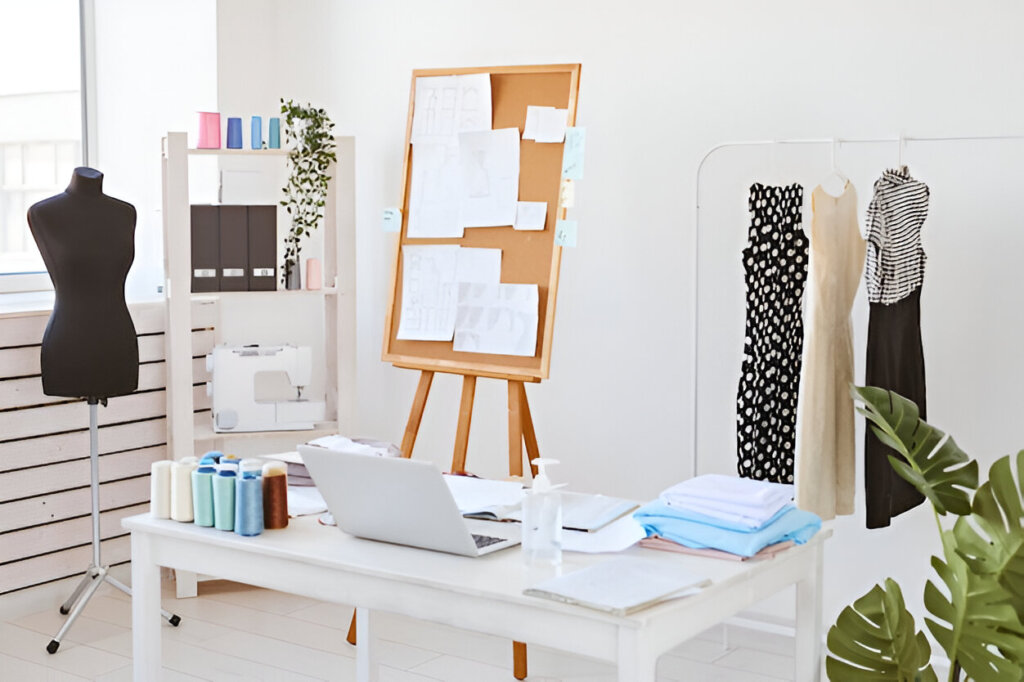
You will lead the leadership team as the founder. Consider important positions that you will need to hire, such as a production manager or lead designer, to launch your company. For a small startup, you may do many of these jobs yourself initially. As the company expands, add seasoned experts who share your vision to your leadership team.
After you’ve filled the important leadership roles with capable individuals who enhance your abilities, collaborate with them to precisely define each task and duty. Ensure that every leader has the power and means to carry out their duties in their respective areas of responsibility.
The leadership team convenes regularly to discuss developments, resolve issues, and maintain team alignment with the organisation’s objectives.
Staffing Up
Initially, hire interns or part-timers to keep staffing low. Seek adaptable individuals who are capable of handling a variety of tasks. As sales increase, bring on full-time staff to handle essential functions. Promote from within when possible, since existing staff already understand your brand and culture.
Give top priority to candidates who are enthusiastic about your objective in every hiring. In a startup setting, enthusiasm and a strong work ethic are just as valuable as experience and expertise. Provide avenues for professional development to sustain team morale. Encourage a culture of open communication and teamwork where all employees are motivated to see the company succeed.
Present Your Financial Outlook
You’ll need to present investors with the figures to persuade them that your clothing line will be profitable. Create a financial forecast that spans three years and contains balance sheets, cash flow statements, and income statements.
Examine the possible sales of your goods using data and trends from the industry. Allow for reasonable operating and cost of goods sold charges. Estimate the amount of money you’ll need and how you’ll utilise it to launch your firm. Even if it takes some time, investors want to see that you have carefully considered all the financial aspects and have a clear route to profitability.
While they shouldn’t be flawless, your finances should be thoughtfully considered and realistic. Be ready to go over your main presumptions and the methodology you used to arrive at your forecasts. Since investors are aware that startups are subject to uncertainty, offering a variety of scenarios—both positive and negative—can enhance trust. With a solid financial plan and vision for growth, you’ll convince investors that your clothing line can generate good returns over the long run.
Carefully Examine The Business Plan For Typos And Other Errors
The final step involves meticulously proofreading your clothing company’s business plan for any errors or typos before sharing it with others. Even small mistakes can reflect poorly on you and your brand and detract from an otherwise well-crafted plan.
Double-check that all numbers, statistics, dates, names, and other facts are correct. Verify that the formatting, spacing, and style are consistent throughout. Have others review any unclear or confusing parts that you can clarify.
Scrutinize each section to confirm all details are coherent and compelling, and paint an optimistic yet realistic picture of your clothing line’s potential for success. It is a worthwhile investment of effort to refine and polish your company plan. You’ll have a polished piece of paper to support your concept when you’re ready to begin making loan applications or pitching to investors.
Your apparel business plan will provide potential customers with the assurance that you have considered every angle of creating a sustainable clothing line and are ready to take your hobby and turn it into a successful venture.
Add Informative Graphics or Engaging Photos To Break Up Walls of Text
Words are not as powerful as images. To keep readers interested, intercut images of your designs, behind-the-scenes glimpses of your team at work, or captivating infographics. Breaking up lengthy paragraphs with visuals gives their eyes a rest and helps convey information more dynamically.
A business plan for a clothing line should incorporate visual elements to demonstrate your brand’s aesthetic and story. Add photos of your current or forthcoming collection, sketches or CAD drawings of designs, pictures of your workspace or studio, or a collage of inspiration and materials. Infographics highlighting key business metrics, your target customer, or startup costs are useful for summarising data in an easy-to-digest format.
Embedding visuals into your business plan helps bring your clothing line to life for the reader. They provide context that helps the reader visualise what your products and company culture look like. Photographs and graphics also make your plan appear more polished and professional. A wall of text could be intimidating, but when combined with colourful visuals, the arrangement becomes appealing and well-balanced, drawing the reader in.
Select high-quality, high-resolution photos that fit the visual style of your company and enhance the overall appearance and feel of your business plan for the best outcomes. Keep captions brief but descriptive, and be sure to optimise images for web viewing. A few well-placed visuals can speak volumes.
Is A Clothing Line Profitable?
The apparel market is expanding quickly. This is especially valid for internet shopping. By 2021, 2.14 billion individuals worldwide will shop online, according to Statista. Online sales have increased dramatically in the last few years, especially after COVID-19 hit and more people stayed at home.
People adore how convenient and safe online shopping is. Because of the affordable prices, they may find the best products while shopping in the comfort of their beds.
You can take advantage of the enormous sums of money that are spent on clothing each year worldwide by deciding to launch a clothing business. Your chances of success in this business are significantly increased if you take the time to identify who your target customer is and make a concerted effort to fulfil their requirements.
Either you open a physical store or you sell everything online, but either way, you need to have an internet store where people can buy your products from anywhere in the world. You may find yourself prospering if you follow the process and your passion.
How Much Does It Cost To Start A Clothing Line?

Are you wondering exactly how much does it cost to make clothes? There are several paths into the fashion industry, each requiring varying levels of financial commitment. The cheap upfront costs of print-on-demand make it a great option for novice business owners. POD takes a different approach. Your things are printed and shipped only once a customer makes a purchase from you, which reduces your upfront costs and carbon footprint.
Some company ideas demand more substantial financial outlays, such as manufacturing your clothing line, selling wholesale, or engaging in white-label production.
Buying in bulk and reselling things at wholesale requires large upfront costs for both merchandise and storage. In a similar vein, white-label manufacturing necessitates financial effort to brand generic products. The most time- and money-consuming option is to make your clothes. It includes costs for production, fabric testing and research, and design creation.
Using a business plan in conjunction with your creativity is the key to each model. POD’s main costs include marketing and design creation; production and inventory are additional costs. Regardless of the strategy, you must set aside a marketing budget to contact your potential customers. To balance your budget, artistic vision, and business goals, consider these aspects when deciding on an appropriate path into the fashion industry.
Once you have an idea of how much you can contribute yourself, research funding options like loans, crowdsourcing, and investor searches to support your aspirations of launching a clothing line.
What Clothing Line Makes The Most Money?
In general, the most profitable clothing lines are:
- Luxury brands: If you can establish a high-end luxury brand, the profit margins are huge. Think of brands like Gucci and Louis Vuitton. These custom clothing manufacturers can charge exorbitant rates for stylish apparel and accessories.
- Athleisure wear: Athleisure clothing has become extremely popular and mainstream. Brands like Ludyway Apparel, which specialises in high-quality athletic apparel, are very profitable.
- Trendy fast fashion: Fast fashion companies like Zara and Forever 21 that stay ahead of the trends can make a lot of money. They produce clothing very quickly based on the latest styles and can sell items at lower price points with decent profit margins due to low production costs.
The most profitable clothing lines can identify key market opportunities, build a loyal customer following, and deliver fashionable, quality products with strong brand recognition. By starting with a focused product line in one of these areas, keeping costs low, and growing strategically, you can build a very profitable clothing business.
A Business Plan for Your Label
You’re ready to take on step one now that you know the basics of the clothing business plan! From developing your brand vision to creating financial projections, following this process will help you craft a solid business plan to launch your fashion dreams. Remember to strike a balance between what makes your ideas unique and what your target audience wants as you get ready to introduce your brand into the competitive fashion industry.
A strong business strategy, a unique design ethos, and a keen understanding of consumer and market trends are essential for success in the fashion sector. It’s important to keep in mind that you won’t suddenly become a millionaire.
FAQs
How much money do brands of apparel make annually?
Across the nation, the average yearly salary for clothing brand owners is over $50,000. A clothing line’s yearly profits can vary greatly depending on several variables. Profits can range from $23,751 to $140,935 in this range.
Is it necessary to register a clothing brand?
While it’s not legally necessary, trademarking your clothing brand is strongly advised. By securing your distinctive designs and brand identification, trademarking your brand or brands helps to preserve your creative output and goods.
What are the advantages of launching a clothing line?
One of the best ways to combine financial acumen with creative enthusiasm is to launch a clothing line. Along with transforming your passions into a successful business, it also allows you to experience the impact of your artistic creations on people in public.
What is a clothing brand’s typical profit margin?
In the apparel industry, a company’s profit margin is contingent upon its size, cost of production, and pricing tactics. A well-known brand may have a profit margin of 50%, whereas a tiny manufacturer may only have a profit margin of 10% to 15%.


